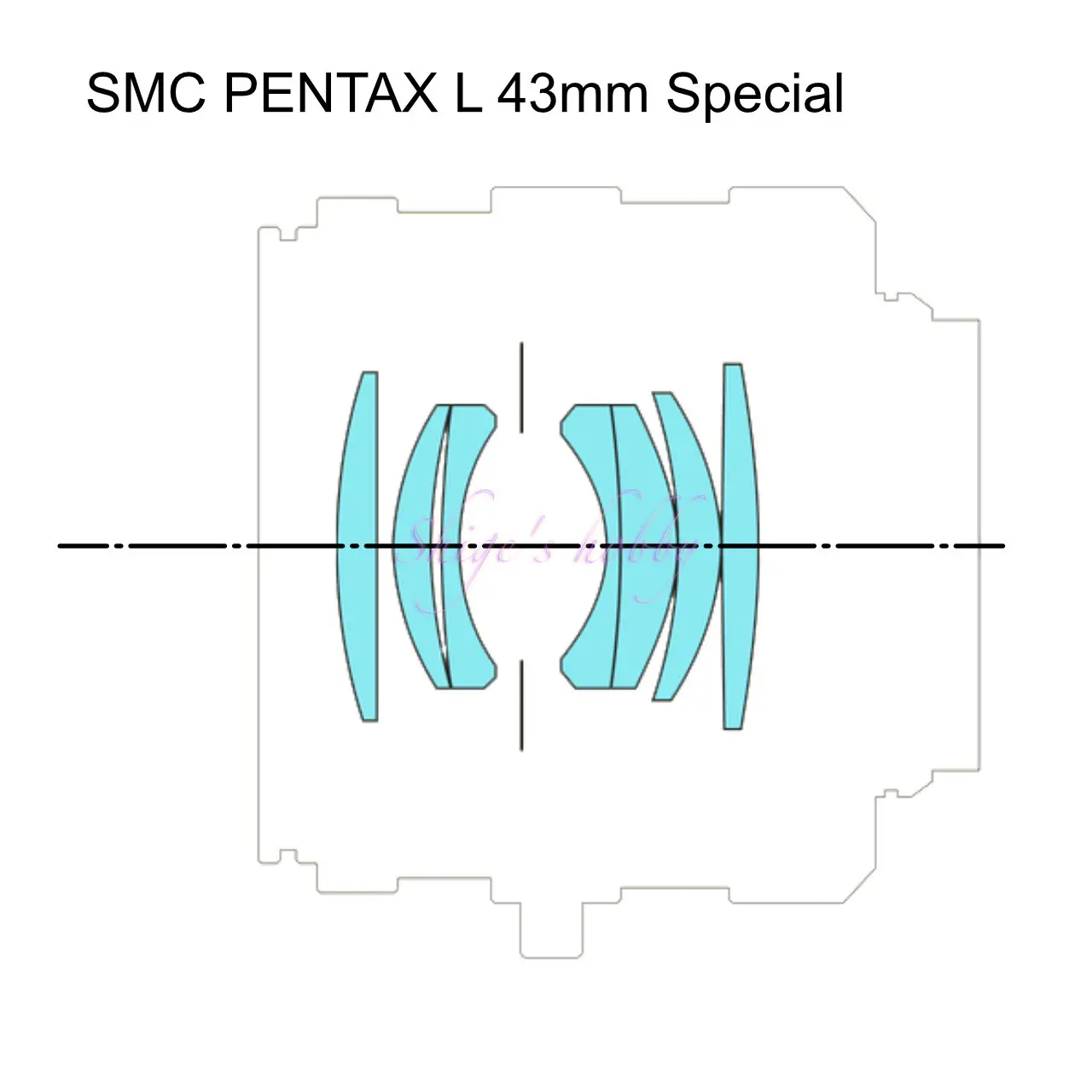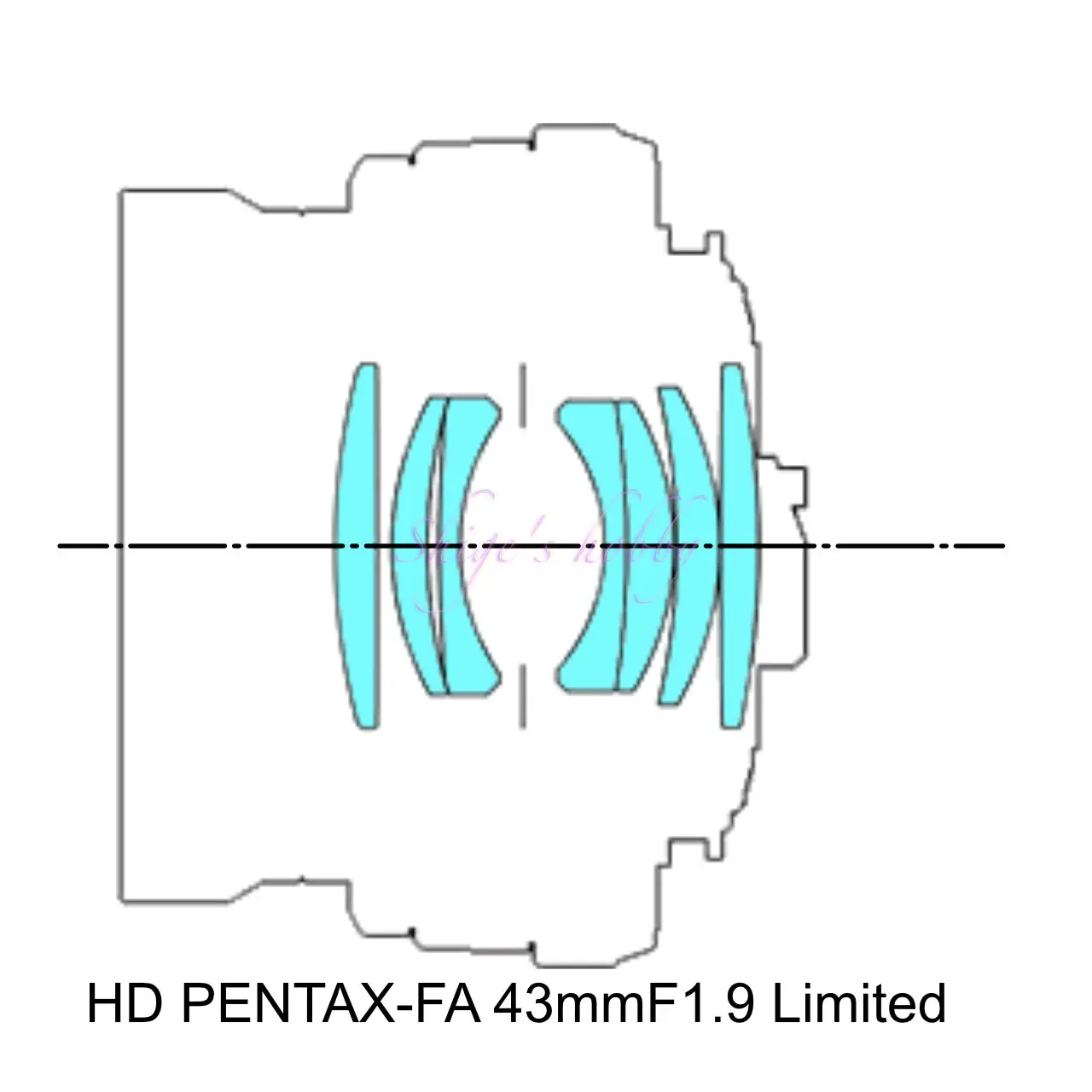Last updated on 2025-07-18
A review and photo examples using the Leica L39 screw mount / smc PENTAX-L 43mm F1.9 Special with digital and film cameras.
Table of contents
Gallery
The sample photos were taken with a Panasonic LUMIX GF1, HEXAR RF + KODAK EPR-64 + NIKON LS-50
Review

1.Overview
The smc PENTAX-L 43mm F1.9 Special is a semi-standard lens with a focal length of 43mm and equipped with a Leica L39 screw mount, released by Pentax in 2000. It is available in two colors, black and silver, and is limited to a total of 2,000 units.
The main specifications are as follows, and details are listed in the table.
- Aperture value: 1.9
- Lens construction: 6 groups, 7 elements
- Aperture blades: 9 elements
- Minimum shooting distance: 0.7m
- Leica M rangefinder camera rangefinder coupling: 0.7m
- Hood: Built-in, retractable type
The focal length of 43mm does not have a standard viewfinder frame for rangefinder cameras, so an external viewfinder with a 43mm/50mm frame is included as an accessory with the new lens.
2.Usability
The results of shooting with the smc PENTAX-L 43mm F1.9 Special show a calm depiction with both delicacy and moderate bokeh. When used with 35mm film, the corners are slightly distorted, but not to a level that bothers you.
As for digital cameras, the LEICA M9 with a 35mm full-frame sensor shows the same slight distortion as film, and images with purple false colors in the highlights were seen.
False colors in 35mm full-frame sensor cameras depend in large part on image generation, and also on the compatibility of the camera and lens used, so it is advisable to test in advance.
When shooting with the LEICA M8 with an APS-H size sensor, there are no problems with the depiction, and with the smaller sensor size R-D1 with an APS-C size sensor and LUMIX GF1 with a Micro Four Thirds (M43) sensor, the results are uniform and flawless throughout the entire screen because only the center of the lens is used.
Both cameras have a decent resistance to backlight, and although images with a slightly lower contrast were observed at full aperture, this can be made unnoticeable by slightly correcting the contrast.
The lens design follows the trend of lenses released at the same time, with a built-in hood and a finger grip on the focus ring. This is to cut harmful light and improve operability.
The lens exterior has a cylindrical design with few irregularities, so users who prefer simple designs will appreciate it, but users who prefer a tapered lens barrel will find it uninteresting.
The external viewfinder has the 43mm/50mm shooting range frames printed on top of each other. However, the 50mm frame is not necessary, and it would be better if only the 43mm frame was used for a cleaner look.
The external viewfinder is a rough tool used only to check the shooting range, and you should be aware of the outside of the 50mm frame, which is displayed using the standard 50mm frame for Barnack Leica cameras and the 50mm/75mm L39-M mount adapter for M-mount cameras. Alternatively, if you use a 35/135mm L39-M mount adapter and shoot while keeping in mind the inside of the 35mm, you can generally capture the scenery within the range you have in mind.
The LEICA CL, MINOLTA CLE, and BESSA R3 series have a special 40mm frame, so there is little sense of incongruity if you shoot with the 40mm frame.
3.Summary
In conclusion, to sum up the smc PENTAX-L 43mm F1.9 Special, since it works with rangefinder camera distance meters, if you want to focus with double image matching, including with Barnack Leica and Leica M-compatible cameras, it is worth purchasing the L39 mount version.
Specification ,Study and more
The era of the smc PENTAX-L 43mm F1.9 Special
In the 2010s, when I bought the smc PENTAX-L 43mm F1.9 Special, lenses for rangefinder cameras were at rock bottom prices, and this lens was often seen on the second-hand market. I bought it at a not-so-high price at the time. Combined with an excess supply of 2,000 units, I saw new lenses in their boxes for about 10 years after its release.
Looking back at the time, 2000, when this lens was released, was a time when lens-integrated digital cameras with small image sensors were released, while digital SLR cameras with large image sensors and interchangeable lenses were for professional use, and most photographers were still using film. During this period, SLR cameras, which allowed you to see the shooting range directly through the viewfinder, were popular, and SLR cameras accounted for almost all of the camera market share.
Rangefinder cameras are mainly used by Leica enthusiasts, who are not interested in anything other than the Leica brand. This lens, which has a special focal length of 43mm that is not found in normal rangefinder cameras, was avoided by rangefinder camera users and did not sell well.
Time passed and in 2004, the release of the digital rangefinder camera R-D1 from EPSON paved the way for the digital use of L39 mount and M mount lenses. At that time, this lens was sometimes introduced along with camera reviews.
The mirrorless camera that most uses L39 / Leica M lenses in the 2020s was the first Panasonic G1, released in 2008. Since then, with the spread of M-mount digital cameras and the rise in popularity of mirrorless cameras, this lens has disappeared from the market and the price has stabilized accordingly.
smc PENTAX 43mm F1.9 sister lens
The smc PENTAX-L 43mm F1.9 Special has the same lens configuration as the HD PENTAX-FA 43mmF1.9 Limited and smc PENTAX-FA 43mm F1.9 Limited, which have been released for Pentax’s K-mount SLR cameras, and can be considered sibling lenses.
Not only do the two lenses differ in mount shape, but they also differ in one functionality.
The K-mount version for SLR cameras has a short minimum shooting distance of 0.45m, and the latest HD PENTAX-FA 43mmF1.9 Limited also has a new lens coating, so it is thought that its performance is improved over the L39 mount version.
For this reason, when considering use with mirrorless cameras and other companies’ SLRs, the Pentax-K mount version can be considered superior due to its high versatility thanks to the wide variety of mount adapters available, and its practicality in terms of its short minimum shooting distance.
- The lens construction diagrams are taken from each company’s materials, and the sizes have been adjusted by us, so they are not exact.


| Items | SMC PENTAX L 43mm Special | HD PENTAX-FA 43mmF1.9 Limited |
| Focal length(mm) | 43 | 43 |
| Max aperture | 1.9 | 1.9 |
| Min aperture | 16 | 16 |
| Leaf blade | 9 | 8 |
| Lens Construction | 7elements in 6groups | 7elements in 6groups |
| Min distance(m) | 0.7 | 0.45 |
| Lens length(mm) | 47 | 27 |
| Max diameter(mm) | 55 | 64 |
| Filter Size(mm) | 40.5 | 49 |
| Weight(g) | 230(Black / Silver) | 155 |
| Lens Mount | LEICA L39 | PENTAX-K |
| Production numbers | 2000 | ? |
| Release date | September 23, 2000 | April 28, 2021 |
Reference links
- Leica lenses of the world (Shashin Kogyosha) ・Ads by Amazon
- HD PENTAX-FA 43mmF1.9 Limited(ENG)
- HD PENTAX-FA 43mmF1.9 Limited(JP)
Update history
- 2025.3.31
- 2024.07.17
Affiliate link
- Please see the disclaimer regarding advertising here.
- Italicized links in the text are advertisement links that take you to other sites.
- Leica lens・Ads by Amazon
- Leica digital・Ads by Amazon
- Leica camera body・Ads by Amazon
- Leica accessory・Ads by Amazon
- Leica book・Ads by Amazon

Amazon Prime Sale



Be First to Comment